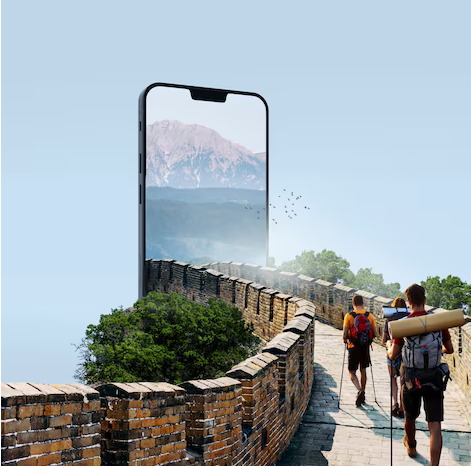What is the role of Augmented Reality at airports?
After making waves in the gaming and healthcare sector, augmented reality is now making its mark in the air travel sector. AR is transforming the airport and passenger experience by superimposing digital content on real world objects. From real-time information and personalized content to navigation and safety, AR is improving every aspect of airport sector.
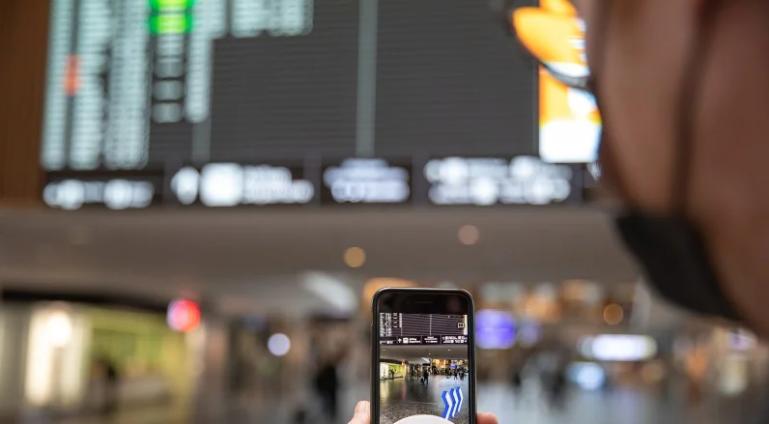
source: airport-technology.com
Benefits of Augmented Reality in Airports
Enhanced Passenger Experience
AR is a great tool to enhance the passenger experience within the terminal. Airports and airlines use AR to give passengers real-time data, personalized content, and better navigation. The use of augmented reality improves in-flight entertainment and provides virtual display of safety regulations. It also makes it easier to communicate with staff and translate languages, making travel hassle free.
Increased Efficiency
Use of AR technology helps increase efficiency of airport management. For example, Singapore airport has been using AR technology for its ground handling operations since 2017. The goal was to make handling bags more efficient, cut load times by about 15 minutes, boost productivity, and make the workplace safer for employees. This reduces plane turnover times, minimizing passenger delays and baggage capacity issues.
Improved Safety and Security
AR can be used to virtually simulate safety procedure to the procedures. AR helps to develops a virtual setting so the passengers can better understand the safety protocols and find emergency exits. This will help them to effectively respond in a situation of emergency. This improves flight safety and prepares passengers for any situation.
Enhanced Retail and Dining Experiences
AR offers retailers the chance to promote their business effectively. It alerts the passengers about the real time discounts and flash deals that are going on there. For example, a family is walking in front of a restaurant. The mobile AR app will alert them about the ongoing deals and discounts on food. This will provide them with finest dining experience at the airport.
6 Best Examples of AR Airport Applications
Marketing and Advertising
Use of AR technology can be strong advertising tool in airports. Advertisers can use AR to create immersive, interactive experiences for passengers to engage them while they wait for flights. They can also use AR to advertise their services through digital displays. AR technology can convert typical static billboards into dynamic and eye-catching displays.
For example, Hong Kong International Airport offers many exciting AR generated immersive experiences. Their innovative AR gyroscopic technology allows you to take flights to anywhere in the world without leaving the comfort of home. Their ‘DepARture to Rewards‘ offer lets you embark on virtual journeys while winning surprise rewards.
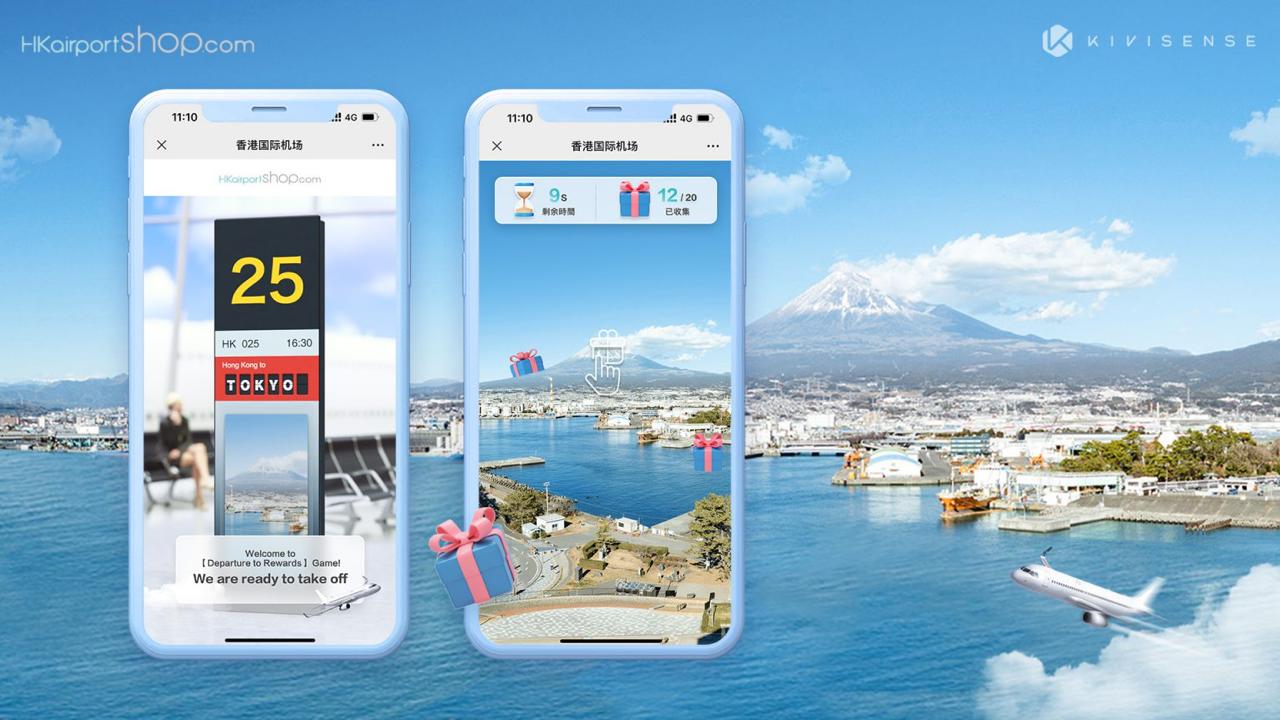
Navigation and Wayfinding
AR is a great tool for passengers in navigating their way through airports. It overlays digital arrows and signs projected over their real-world view. This is very useful for passengers who are not familiar with the set-up of the airport and for those who have vision or mobility issues.
AR-based wayfinding is helpful for passengers in finding gates, bathrooms, and other airport facilities without signs. AR apps display route details, facility locations, gate changes, and flight status updates on passengers’ phones.
Dubai airport uses personalized indoor navigation system to provide real-time guidance to the passengers. This system helps them navigate the complex layout of the airport easily. They can receive personalized route directions according to their requirement. This makes their travelling experience hassle free and convenient.
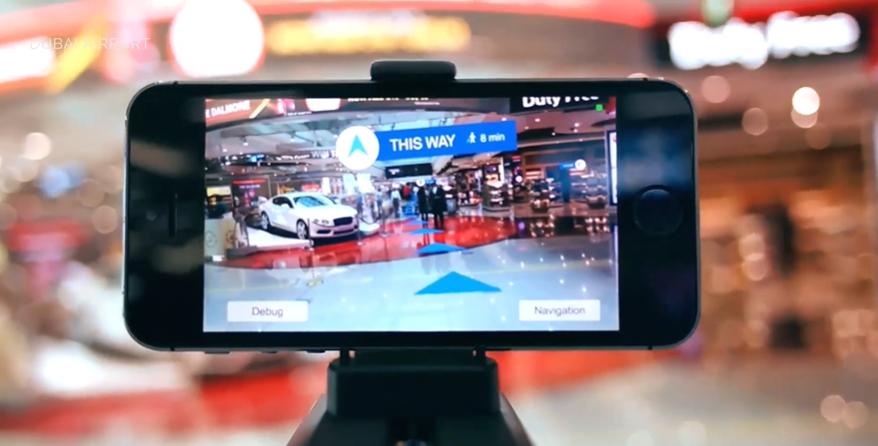
source: youtube, insider navigation
Passenger entertainment
AR technology allows the passengers to access interactive and customized content during their flight. They can watch 3D movies, explore virtual landscapes and play digital games using AR technology. This improves the overall entertainment experience and lets travelers customize their in-flight entertainment to suit their tastes.
When it comes to provide innovative AR experiences, Dubai international airport sets the standard very high. Currently, Emirates is testing out virtual reality headsets for its Skylights theatre in its business class lounges. These headsets can deliver 3D and 2D entertainment content on demand and even contain 360-degree video videos for passionate tech lovers.
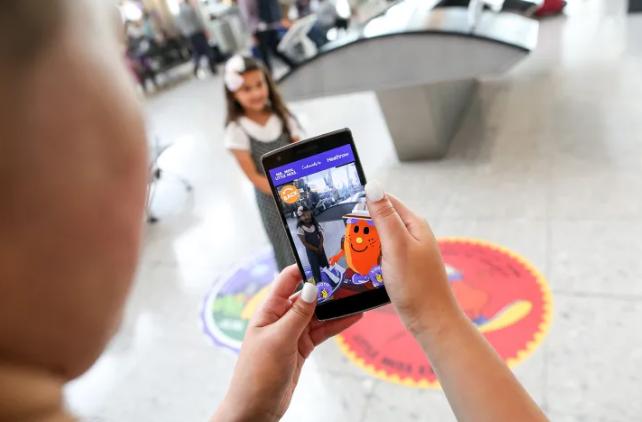
source:digitaltrends, Heathrow
Shopping facility
Since airport customers are often in a rush, AR technology can be a lifesaver in terms of offering quick guidance, information, and help. Customers can easily find what they need before rushing to the gate.
Specially, if they have a little more time on their hands, AR technology can enhance their shopping experience greatly. This gives commercial entities in airports a good chance to experiment with virtual product demos and virtual live streaming.
iGA istanbul airport uses augmented reality technology to provide shopping and retail information to passengers. The airport has built a virtual avatar, called CİGA, to guide passengers on their way through the airport. It provides route directions and details about the stores in the iGA Istanbul Airport International Arrivals Bosphorus area. The character also displays exclusive discounts from associated stores.

source: moodiedavittreport.com
Safety training for staff
AR technology can play a crucial role in safety training of staff at airports. It can help to simulate various safety procedure and strategies virtually. This will allow the staff to better understand the safety measures and emergency protocols. In case of any mishap or accident, they will be better prepared to tackle the situation in an appropriate manner.
Bangalore international airport limited is the first airport in south asia to use a rosenbauer tactical simulator. Firefighters can use this simulator to train in a variety of realistic settings. It can simulate and customize many different scenarios to make them ready for every type of airport-related emergency.
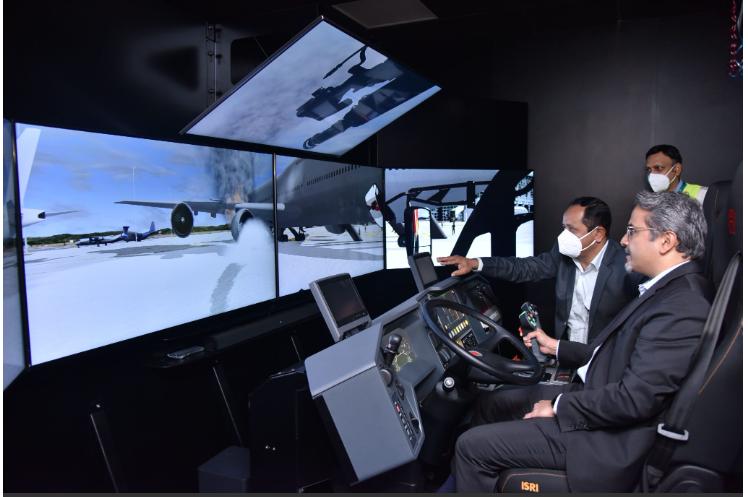
Retail promotion
Retailers can use AR technology to promote their businesses in a more effective way. AR apps are a great tool in advertising their services. When passengers walk past their stores, they get mobile alerts about all the real time deals going on there. This enhances their engagement and interactivity with the audience, promoting their business.
Kansai international airport introduced its latest commercial area for passengers in 2023. It has been updated with a central plaza, an exciting gate area, and four mood zones. These zones are named as peaceful, curious, active and fun. These areas have many retail outlets including luxury brands and restaurants. This helps to promote retail sales and increase revenue for brands.
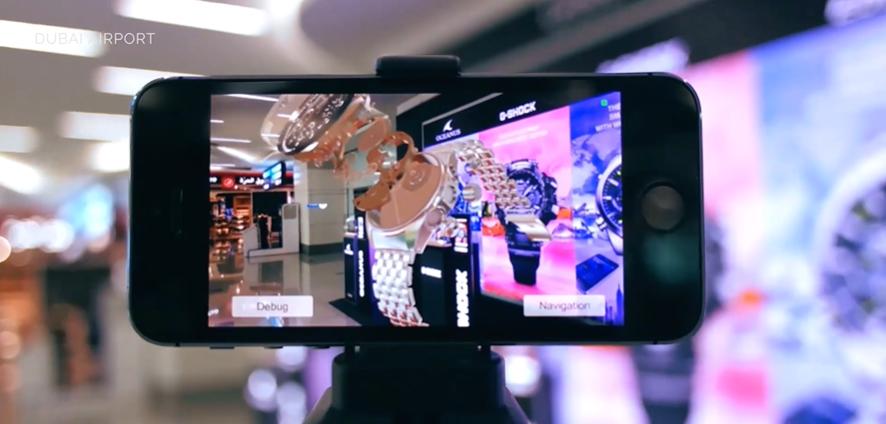
source: youtube, insider navigation
Innovations and Technology Behind AR in Airports
The primary technology behind AR in airports is that the camera takes the real-world images and present it to the user by overlaying digital information on it. It uses many variables for this, which include:
- Direction or location the camera points towards with a compass or GPS.
- Image recognition to help applications interpret captured images
- Labels, QR codes, any visual code
These variables provide information to AR apps which present it to the users.
Benefits of airport AR apps
Passenger peace of mind
AR apps enhance the comfort and convenience of the passengers by keeping them well informed about all the details. Passengers can get a track of their flight timings, terminals and any possible flight delays. The apps help them to plan their times by correlating all the data with their location. This provides the passengers a peace of mind and keep them stress free.
Enhanced comfort
AR apps have many features to enhance the comfort of passengers. These features include baggage registration, parking reservations and food orders. These apps can also guide them to any desired store or restaurant by pointing to the right direction and providing digital arrows. They can also get alerts about any ongoing discounts there.
Future trends of AR at airports
The use of augmented reality in airports has great potential in the near future. AR virtualization and digital twins can improve decision-making with real-time data and insights.
One potential future application of augmented reality is the use of virtual reality headsets. These headsets can let the passengers virtually explore any destination or play interactive 3D games in flight.
Another potential trend can be the use of holographic displays. These displays can give travelers real-time instructions and information without signs or screens. This will lead to an immersive and hassle-free travel experience.
Conclusion
Augmented reality is revolutionizing airport sector by enhancing passenger experience and operations. AR technology is helping marketers to be more creative and fostering improved operation and training skills. As the AR technology is improving and advancing day by day, it will unlock many more potential benefits in the air travel and airport sector. You can visit Kivisense for many feasible AR try-on solutions for marketing and e-commerce.




